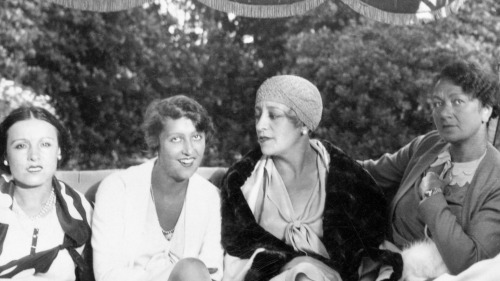“The atmosphere in the Hollywood lesbian community began to change in the late 1920s and early
“The atmosphere in the Hollywood lesbian community began to change in the late 1920s and early 1930s. This change was a reflection of three important developments: (1) the increased adoption by the general public of the morbidification of sexual relations between women promoted by some sexologists; (2) the rise of the studio system in Hollywood; and (3) the onset of economic problems connected with the Stock Market Crash of 1929 and the Great Depression. The effect of the heterosexual backlash and the rise of the companionate marriage in the mid- to late 1920s was to push women who loved women further into the closet. The rise of the studio system meant that, were these women ever to venture from that closet and be caught in an embarrassing situation in public, the news media would not print the story. Hard economic times made these women vulnerable to the demands of the studio bosses who protected them—vulnerable enough, for example, to agree to date or even marry a man in order to appear heterosexual when they actually were not. Hollywood had become, in effect, a company town.Many lesbians and bisexual women in Hollywood in the 1930s and 1940s, especially those from Europe, gathered at the home of Berthold (1885-1953) and Salka Viertel (1889-1978). The Viertels were German émigrés who had come to Hollywood in 1928 to work in the film industry. Like Salka, most of the women who gathered at her home were “Gillette Blades”—that is, their sexuality ‘cut both ways.’ Some American-born actresses also fit into this category of actual or apparent bisexuality, while others were lesbians who adhered to the older model of the Boston marriage and lived with their lovers in what was purportedly a platonic relationship.Following World War II, and with the rise of the Cold War in the late 1940s, the situation of Hollywood lesbians once again underwent a paradigm shift. After Communists, homosexuals were the favorite targets of witch-hunting politicians and bureaucrats, especially those of the House Un-American Activities (HUAC). At this same time, scandal magazines began to print articles that openly identified homosexual stars as such. The tabloid Confidential was directly responsible for the end of Lizabeth Scott’s (1922-2015) career in motion pictures when it accused her in print of ‘unnatural’ sexual activity. Many of the lesbians and bisexual women who were married began spending more time with their spouses, and many who were unmarried rushed to the alter. Some of the homosexuals in Hollywood reacted to this climate of fear by becoming reactionary in their politics and cooperating with those carrying out the persecutions. Barbara Stanwyck (1907-1990) and her ‘beard’ husband (a spouse who is taken by a women who engages in homosexual behavior primarily to help disguise her lesbian activities) Robert Taylor (1911-1969) became archconservatives after World War II. Taylor, who was also gay, was the only actor to ‘name names’ in front of HUAC. Salka Viertel was blacklisted and left the country. The climate of fear and paranoia among Hollywood homosexuals was to last well into the early 1960s.“-Excerpt from Encyclopedia of Lesbian and Gay Histories and Cultures by Bonnie Zimmerman and George Haggerty -- source link
Tumblr Blog : oh-sewing-circle.tumblr.com
#bisexual#lesbian#homosexuality#sewing circle#queer history#lesbian history#lgbt history#hollywood


